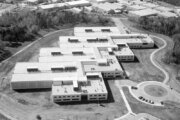CareFirst BlueCross BlueShield, the largest not-for-profit health plan in the mid-Atlantic region, is making investments beyond the traditional world of health care to strengthen communities and improve lives.
The company is taking a multi-sector, multi-disciplinary approach and working closely with local organizations to help break down systemic and historic inequities across Maryland, Washington D.C., and Northern Virginia.
“We focus on economic inclusion and bolstering development in the neighborhoods that we serve,” said Kimberly Harris, the director of community health and social impact at CareFirst.
Throughout 2021, CareFirst invested $26.2 million to improve overall health and increase the accessibility, affordability, safety and quality of healthcare throughout the region.
In June, CareFirst announced a grant investment of up to $2.2 million to 16 small businesses and diverse nonprofits, collectively serving more than 30,000 people.
“CareFirst is committed to removing obstacles to health equity, such as economic instability,” said Stacia Cohen, executive vice president of health services for CareFirst. “The health of a community does not lie entirely within the walls of a doctor’s office, which means our investments must work to address factors outside of clinical interventions.”
Addressing health outcomes
CareFirst works to address the root causes of poor health outcomes and achieve health equity in the region through strategic philanthropic investments, community-based partnerships and advocating for systemic change.
“To meet our goal of achieving total health equity, we focus on removing obstacles to good health, such as racism, poverty and discrimination,” Harris said. “When these barriers are lifted, so are their consequences.”
Many populations experience health disparities unevenly based on a range of factors the healthcare industry calls social determinants of health including their gender, sexual orientation and even their zip code. For example, life expectancy in Montgomery County, Maryland, is greater by eight years compared to neighboring Washington, D.C.
“When we talk about social determinants of health, we’re talking about non-clinical factors that have an impact,” Harris explained. “Medical care is estimated to account for only 10-20% of a person’s health while social, economic and environmental factors account for 80-90%.”
Those non-clinical factors are not necessarily new, but the effects of the coronavirus pandemic shed more light on them. The company now invests in factors addressing things like food insecurity, transportation barriers, health literacy and more alongside economic stability.
“We all have a role in this,” Harris said. “I think we’re now being more honest about what the issues are, where the gaps are and who needs to be at the table to address those gaps.”
Partnering with local groups
CareFirst partners and collaborates with community leaders, community health, grassroots movements and nonprofit organizations so it can better concentrate on vulnerable and underserved populations.
In a recent announcement of $1.17 million to combat the diabetes epidemic, CareFirst highlighted the need for place-based initiatives in addressing community health, which has become a staple of all philanthropic investments.
Their strategy “focuses on health equity through the lens of social determinants of health, where we partner with place-based programs to drive healthcare transformation with and for the communities we serve,” CareFirst said in a statement. A place-based program is lead by community members that addresses the unique needs of that community.
CareFirst has partnered with community organizations large and small as a way of helping with economic needs, minimizing barriers to accessing care and addressing essential environmental conditions that shape the health of communities.
“We have relationships with the Greater Washington Urban League, the Boys & Girls Club of Greater Washington and Friends of Anacostia Park, among many others,” Harris explained.
The partnership involving Friends of Anacostia Park is particularly unique, as the nonprofit simultaneously works to improve the park and hire employees.
“They are revitalizing the park, which has sometimes been underutilized or under-resourced, while at the same time creating jobs for that area which definitely rolls back into economic stability,” Harris said.
The effort helps to build a safe, green space where people can exercise and connect with each other in a positive way.
“We really create pipelines within communities to strengthen those communities,” Harris said. “Health is wealth and if you don’t have a strong community, it doesn’t matter if you’re healthy as an individual.”
Visit www.carefirst.com/community for more information about CareFirst’s commitment to community health and social impact.





